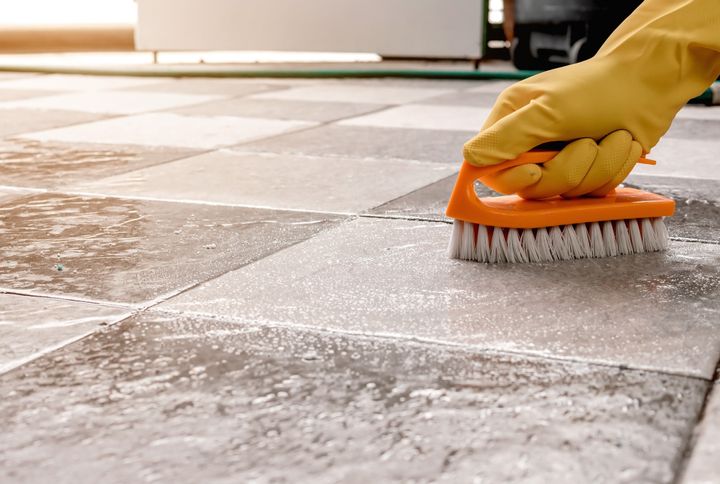
How clean is your home? Sure, it might look like your home is spotless but is it really clean? A simple wipe down here and there isn’t enough to keep our homes hygienic sadly.
Muddy shoes, pets, visitors, and the general hustle and bustle of everyday life means that dirt buildup is natural in heavy-traffic areas like hallways and living rooms.
Even though sticking to a regular cleaning routine can help you to keep on top of essential tasks and ensure that your home remains in good condition, even after we’ve scoured every inch, it can be tough to gauge just how clean our homes truly are.
This is why Comparethemarket conducted an experiment to reveal the areas we may overlook the most when cleaning our home, and the number of bacteria hiding there.
The team conducted a bacteria analysis experiment that involved swabbing areas and items around the house that are usually included in regular cleaning duties, such as TV remotes, light switches, and shower screens, to see how dirty they really are - even after they’ve been cleaned.
It’s safe to say that the results were shocking, our homes aren’t as clean as we think they are.
How often do you clean your TV remote or microwave? Well if you don’t remember you might need to get up right now and give them both a scrub as they both have an average of over 300 bacteria groups. Though they’re dirty, they were the cleanest areas in the home.
Light switches were home to the least amount of bacteria, with an average of just 79 groups living in this location.
However, you might be shocked at the dirtiest places in your home.
Bathroom Vent
The average number of groups of bacteria living inside bathroom vents was 1,991. This might be surprising considering people tend to overlook bathroom vents when it comes to cleaning.
Bathroom vents are a haven for bacteria, providing a warm and damp environment for them to thrive. When bacterial colonies are present in vents, they can become airborne as the air circulates, which can lead to health problems if inhaled. That’s why it’s crucial to include your bathroom vent in your cleaning schedule.
To give your vents a good clean, turn off the power and remove the cover to soak it in soapy water. Dust and scrub the inside of the vent to remove any dirt, and make sure to let everything dry completely before replacing the vent cover and turning on the power again.
Bathroom Shower Screen
Apparently, vents aren’t the only bathroom area that people tend to overlook when it comes to cleaning. Our study showed that shower screens are the second most neglected area, with the second-highest number of bacteria found there.
Shower screens ranked as the second most neglected area with an average of 1,921 groups of bacteria living there.
When asked which areas of their home they clean the most, 60% of participants said the kitchen, and 30% said their living room. However, no one listed the bathroom as their most frequently cleaned space, which could potentially explain why multiple spots here rank among the dirtiest.
The survey found an average of 1,921 groups of bacteria living on shower screens, with a maximum number of at least 11,500. Shower screens can harbour a significant amount of bacteria, most likely due to the hot and humid conditions they provide.
You should make sure to look out for mould in your bathroom as it thrives in damp and humid conditions and is a serious health risk, so take action as soon as you spot the first mould patches forming.
To prevent a build-up of bacteria on your shower screen (or anywhere in your bathroom), make sure to include it in your regular cleaning routine and use an antibacterial surface cleaner to eliminate unwanted germs.
Inside Washing Machine
A washing machine playing hosts around 1,281 groups of bacteria on average. Some of the swabs found zero bacteria present, proving that it’s possible to keep this area clean.
Dirt and grime can build up in your washing machine over time, providing the perfect playground for bacteria. To avoid this – and to make sure your clothes stay fresh – aim to give your washing machine a deep clean at least once a month.
Many modern washing machines even have a dedicated cleaning cycle you can run, to make the process easier.